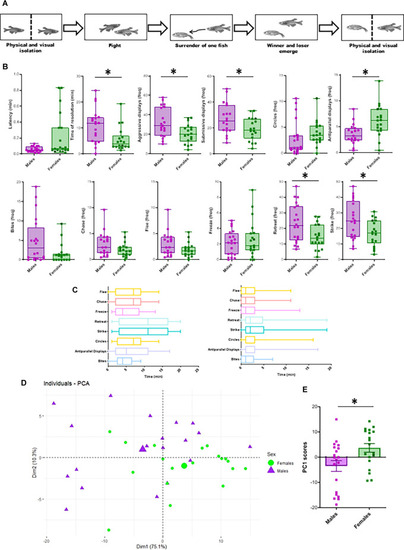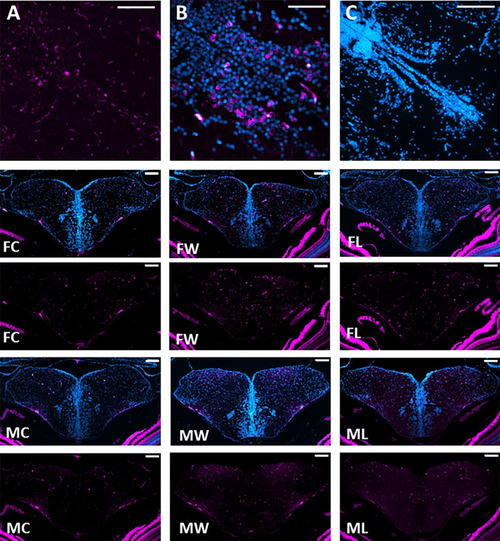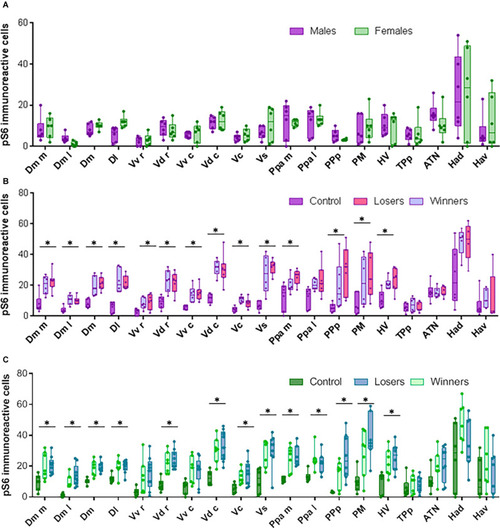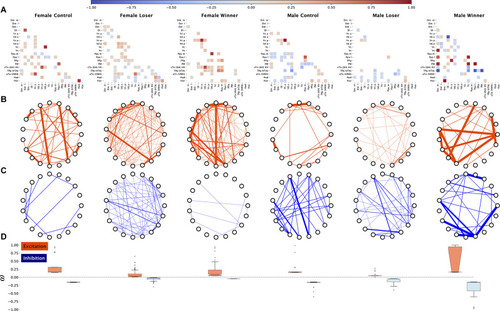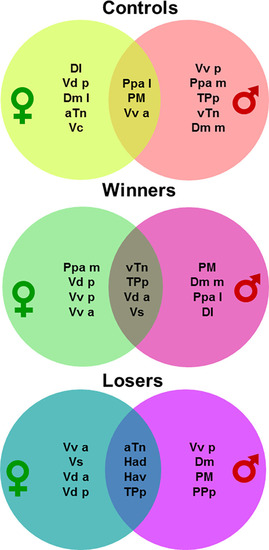- Title
-
Sex Differences in Aggression Are Paralleled by Differential Activation of the Brain Social Decision-Making Network in Zebrafish
- Authors
- Scaia, M.F., Akinrinade, I., Petri, G., Oliveira, R.F.
- Source
- Full text @ Front. Behav. Neurosci.
|
Sex differences in aggressive behavior. |
|
Neuronal activation throughout the brain Social Decision Making Network. |
|
Neural activation in brain areas from the Social decision Making Network after aggressive encounters. |
|
Functional connectivity across the brain regions induced by aggressive interactions, inferred from pS6 immunoreactive cells used as a marker of neural activity. |
|
Venn diagrams representing the most central nodes of the brain social decision-making network in males and females for each social treatment (i.e., non-interacting control, winners, losers). For brain region abbreviations please see the “Materials and Methods” section. |

